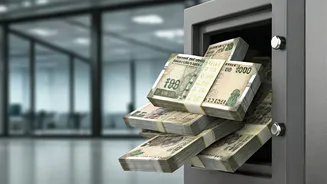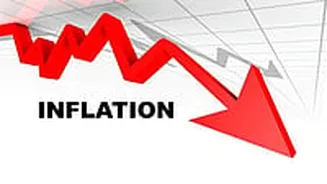Diwali's Financial Boost
This Diwali, the Indian economy is offering a triple treat to its citizens. The festive season has brought about a unique financial opportunity for many
across the country. Through a strategic combination of economic policies, the government aims to boost spending and improve the overall financial well-being of its citizens. This triple bonanza includes income tax cuts, reductions in Goods and Services Tax (GST), and a reduction in the repo rate. These measures are designed to provide financial relief and encourage spending during the festive period. Collectively, these initiatives could contribute to an increase of approximately ₹1.5 lakh in the pockets of consumers, enhancing their purchasing power and stimulating the economy.
Income Tax Cuts Explained
The first element of this Diwali financial package is the strategic implementation of income tax cuts. These tax reductions are designed to leave more disposable income in the hands of taxpayers. By reducing the amount of money individuals owe in taxes, the government aims to increase their spending capacity. This move encourages consumers to spend more on goods and services, which benefits various sectors, including retail and hospitality. The income tax cuts are carefully structured to provide relief to various income groups, ensuring that a broad spectrum of the population can benefit from these fiscal measures. The objective is to inject more cash into the market, which can then be used to fuel economic activity and support businesses during the festive season.
GST Reductions Impact
Alongside the income tax cuts, GST reductions play a crucial role in enhancing the Diwali financial benefits. The government often reduces GST rates on several essential and discretionary items during festive seasons. GST reductions lower the final prices of products and services, making them more affordable for consumers. This leads to increased demand and boosts sales across various sectors. The decreased GST rates cover diverse products, from consumer durables to services, giving citizens a wider selection. By strategically lowering GST, the government intends to encourage consumer spending, which stimulates economic growth and boosts business sales. This approach has a direct effect on reducing the overall cost of living during the Diwali period, making it easier for people to celebrate the festival.
Repo Rate Cut Benefits
The third component of the Diwali financial bonanza is the reduction in the repo rate. The repo rate is the interest rate at which the Reserve Bank of India (RBI) lends money to commercial banks. When the RBI lowers the repo rate, it becomes cheaper for banks to borrow money. As a result, banks can, in turn, offer lower interest rates on loans, including home loans, car loans, and personal loans. Lower interest rates make borrowing more affordable, encouraging consumers to take out loans and spend more. This also stimulates investment, as businesses are more likely to invest when borrowing costs are reduced. The combined effect of lower interest rates is an increase in consumer spending and business investment, which helps to drive economic expansion during Diwali.
Combined Financial Effect
The combined impact of these three measures—income tax cuts, GST reductions, and the repo rate cut—is substantial. By reducing taxes, lowering prices through GST adjustments, and decreasing borrowing costs via the repo rate cut, the government is providing a comprehensive financial relief package. According to estimates, the average household could see around ₹1.5 lakh in additional financial benefit due to these initiatives. This extra money empowers consumers to spend more freely during Diwali, supporting the economy and contributing to a positive economic cycle. It boosts retail sales, helps small businesses, and fosters confidence in the economic climate, making the Diwali season a period of increased financial well-being for a larger part of the population.














